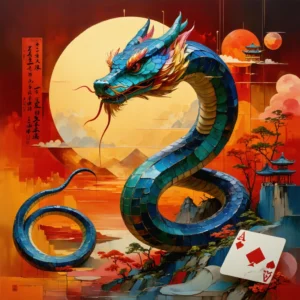
Introduction
Pamela Colman Smith remains an enduring figure in the world of esoteric art, best known for her vivid and evocative illustrations for the Rider-Waite Tarot deck. Her journey intertwines personal creativity with mystical exploration, which subsequently influenced generations of tarot enthusiasts and occult scholars. Moreover, her work reflects passion, complexity, and a clear vision that resonated beyond simple card design. Consequently, her contributions continue to inspire modern artists and practitioners alike, establishing her legacy as both an innovator and a spiritual guide. Indeed, her narrative captivates those who appreciate art infused with symbolism, and her life story illustrates the transformational power of creative expression.
Early Life and Background
Born into a culturally rich atmosphere in late 19th‐century England, Pamela Colman Smith experienced an upbringing that offered both artistic freedom and intellectual curiosity. Her early years unveiled a natural talent for drawing and an interest in mysticism that would later inform her signature style. Additionally, she encountered various artistic movements, which helped her develop a unique synthesis of realism and fantasy. As a result, her background provided a solid foundation for exploring themes of spirituality and nature in her work. Furthermore, family influences and early encounters with occult literature enriched her creative perspective and opened doors to alternative interpretations of the visible world.
Artistic Training
During her formative years, Pamela dedicated herself to rigorous study and experimentation. She immersed herself in art academies and independent study, where she learned classical techniques while simultaneously embracing modern ideas. In her training, mentors and peers offered both encouragement and constructive criticism, which ultimately refined her distinctive style. Notably, she balanced academic instruction with self-directed exploration, thereby merging structured learning with innovative thinking. Consequently, each brushstroke and pencil mark in her illustrations reflects a blend of technical proficiency and creative spontaneity. Additionally, her openness to various influences led her to experiment with themes that bridged conventional art and visionary symbolism.
The Creation of the Rider-Waite Tarot
Pamela’s most renowned work materialized during a period marked by intense experimentation and bold decisions. She collaborated with occult scholars and tarot enthusiasts to design a deck that visually communicated deep metaphysical concepts. As she iterated her ideas, she integrated elements drawn from diverse traditions, ranging from Kabbalah to ancient mythology. Furthermore, her artistic process showcased methodical research alongside imaginative expression. Her illustrations immediately captured the essence of each tarot archetype, while effectively translating abstract symbolism into accessible imagery. Consequently, the Rider-Waite Tarot deck emerged as both an artistic triumph and a tool for spiritual insight, solidifying her reputation in occult art circles.
In producing this groundbreaking work, Pamela followed several integral steps: 1. Extensive research into esoteric symbolism and historical tarot traditions. 2. Development of preliminary sketches that captured the archetypal energy of each card. 3. Iterative refinement through collaboration with occult experts and fellow artists. 4. Final execution in detailed illustrations that balanced clarity with imaginative depth. Each step demonstrated her meticulous attention and dedication to transforming traditional tarot into a visually compelling narrative.
Symbolism and Vision
Pamela infused her illustrations with layers of symbolism, which resonated with both novice and seasoned practitioners. She employed recurring motifs such as natural elements, mythological figures, and geometric patterns to evoke layers of meaning. For example, she used the imagery of the sun and moon to represent duality and balance. Additionally, her use of vibrant color contrasts and subtle shading techniques further deepened the narrative quality of each card. Furthermore, she intentionally integrated hidden symbols that invited viewers to explore multiple levels of interpretation. In doing so, her work not only served as functional tarot guidance but also as a rich tapestry of artistic vision, inviting a diverse audience to appreciate its nuanced beauty.
Pamela’s influence extends beyond aesthetics into cultural and spiritual realms. Her work helped popularize tarot as a medium for personal growth and insight, which subsequently attracted interest from diverse communities worldwide. Additionally, her illustrations became synonymous with a period of spiritual renaissance in art, encouraging dialogue about the relationship between symbolism and inner experience. As a result, her legacy transcends the boundaries of mere illustration; she championed the idea that art can serve as a bridge between the tangible and the mystical. Consequently, her celebrated portfolio continually motivates modern artists and occult practitioners to seek deeper meaning in everyday symbolism.
A summary of key milestones in Pamela Colman Smith’s remarkable journey appears in the table below:
| Year | Event |
|---|---|
| 1878 | Birth in England with early exposure to art |
| 1900-1910 | Formal artistic education and exploration of mystical themes |
| 1909-1910 | Collaboration with occultists leading to the Rider-Waite Tarot |
| Post-1910 | Long-lasting influence on tarot art and modern occult symbolism |
In analyzing her mystical contributions, scholars note that Pamela’s work conveys both literal and allegorical narratives. Her cards often illustrate transitions, challenges, and transformations, which resonate during personal crises and spiritual awakenings. Moreover, she combined artistic intuition with systematic research, which enabled her to produce intricate compositions that invite varied interpretations. Readers frequently encounter a sense of wonder and introspection when engaging with her imagery. Thus, her art continues to spark both scholarly debate and personal reflection, ensuring that her visionary legacy remains alive in contemporary mystical studies.
To conclude, Pamela Colman Smith’s life and work illustrate the timeless interplay of art, mysticism, and human inquiry. Her creative journey remains an inspiring narrative that unites precise technique with profound symbolism. Furthermore, her influence endures through the ongoing use of the Rider-Waite Tarot deck in both artistic and spiritual contexts. By bridging historical tradition with innovative expression, she has etched her name into the annals of art history. Ultimately, her legacy challenges future generations to explore the transformative potential of creative vision and to cherish the enduring dialogue between visible art and unseen realms.






